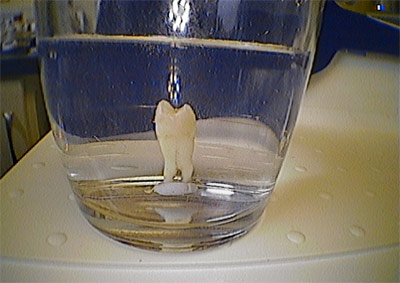Here’s some important information for use in the unfortunate event your child has a dental emergency. This can make the difference between keeping or losing a tooth!
Displaced Teeth
If a tooth is slightly pushed in or out, use light finger pressure to move the tooth back to its normal position. Do not force the tooth. Use a moist cloth or piece of gauze to hold the tooth in the place. See a dentist within 30 minutes.
Knocked Out Tooth

- Find and pick up the tooth by the enamel (the white part of the tooth to prevent damage to the root).
- Handle the tooth as little as possible and do not touch the root.
- If the tooth is dirty, gently rinse it with running water, milk or special saline solution for ten seconds.
- If possible, gently replace the rinsed tooth in the socket using the shape and size of the tooth and either side as a guide and hold it in place with your finger.
- Ask your child to gently bite down on it with a soft cloth or handkerchief acting as a cushion between the teeth.
- If you cannot replace the tooth in the socket, keep it moist in a container of milk, or in a special saline solution found in most first aid boxes and transport it to your dentist. Alternatively keep it in the child’s mouth next to the cheek. Do not wrap it in tissue or cloth as this will damage the living membrane surrounding the root.
- Bring your child to the dentist immediately. If the dentist replants a knocked out tooth within 30 minutes, even up to 1 hour, it may be possible to save the tooth.
- For ’baby teeth’, do not try to replace the tooth in the socket. This could damage the formation of the permanent tooth bud. Seek advice from your dentist as soon as possible.
Broken or Chipped Teeth
See a dentist immediately. Try to find the broken or chipped portion of the tooth and take it with you. Even if that part of the tooth cannot be bonded back to the rest of the tooth, the dentist may be able to use the piece to recreate the appearance of the original tooth.
Toothache
Rinse your child’s mouth with warm water to clean it. Use floss to remove any food that may be trapped between teeth. You may give your child a painkiller, such as a paediatric, sugar-free version of paracetamol for the pain, but you must visit your dentist immediately to find out the cause of the toothache.
Injuries to Soft Tissues
These include tears, cuts or punctures to the cheeks, lips or tongue.
Clean the wound immediately with warm water and then go to the hospital or local emergency centre for treatment. If there is a cut to the tongue, pull the tongue forward and apply pressure to the area with a clean cloth or with gauze to stop the bleeding.
Knocks and tumbles are part of childhood and can result in damage to teeth. Ensure your child wears a mouth guard while playing sports. A mouth guard can protect your child’s teeth and mouth from injury and may reduce the risk of concussion should an accident occur. We recommend mouth guards that are custom made by your dentist because they fit better.
